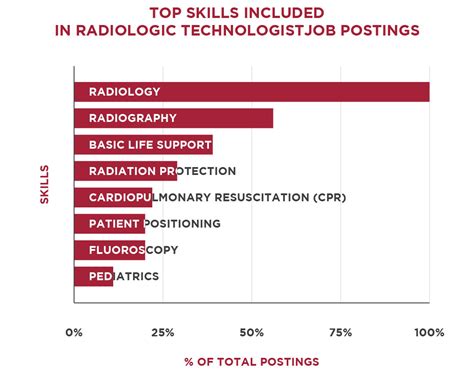The healthcare industry offers numerous career paths that are both rewarding and challenging. Two popular options are Radiologic Technology (Rad Tech) and Nursing. Both careers involve working with patients, utilizing advanced technology, and making a significant impact on people's lives. However, they have distinct differences in terms of job responsibilities, education requirements, and work environments. In this article, we will explore the key differences between Rad Tech and Nursing careers to help you decide which path is right for you.
Job Responsibilities
Rad Techs, also known as radiologic technologists, are responsible for producing high-quality medical images using various imaging modalities such as X-rays, computed tomography (CT), magnetic resonance imaging (MRI), and ultrasound. Their primary duties include:
- Preparing patients for imaging procedures
- Positioning patients and equipment to capture optimal images
- Operating imaging equipment to produce diagnostic images
- Maintaining patient records and image files
- Collaborating with radiologists and other healthcare professionals to ensure accurate diagnoses
On the other hand, nurses are responsible for providing hands-on patient care, administering medications, and monitoring patients' conditions. Their primary duties include:
- Assessing patients' physical and emotional needs
- Developing and implementing patient care plans
- Administering medications and treatments
- Monitoring patients' conditions and reporting changes to physicians
- Educating patients and their families on health and wellness
Education and Training
Rad Techs typically require an associate's degree or a postsecondary certificate in radiologic technology. Many community colleges and universities offer programs in radiologic technology that are accredited by the Joint Review Committee on Education in Radiologic Technology (JRCERT). These programs usually take two years to complete and include both classroom and clinical training.
Nurses, on the other hand, require a diploma, associate's degree, or bachelor's degree in nursing. Nursing programs are accredited by the Accreditation Commission for Education in Nursing (ACEN) or the Commission on Collegiate Nursing Education (CCNE). The length of nursing programs varies from two to four years, depending on the degree level.
Work Environment
Rad Techs typically work in hospitals, outpatient imaging centers, and physician offices. They may work irregular schedules, including evenings, weekends, and holidays. Rad Techs may also be required to be on-call to perform imaging procedures during emergency situations.
Nurses work in a variety of settings, including hospitals, clinics, nursing homes, and community health organizations. They may work rotating shifts, including nights, weekends, and holidays. Nurses may also work in specialty areas such as pediatrics, oncology, or critical care.

Salary and Job Outlook
According to the Bureau of Labor Statistics (BLS), the median annual salary for Rad Techs was $62,760 in May 2020. The BLS also projects a 9% employment growth for Rad Techs from 2020 to 2030, which is faster than the average for all occupations.
The median annual salary for nurses varies depending on the degree level and specialty area. According to the BLS, the median annual salary for registered nurses (RNs) was $76,840 in May 2020. The BLS also projects a 12% employment growth for RNs from 2020 to 2030, which is faster than the average for all occupations.
Personal Qualities and Skills
Both Rad Techs and nurses require strong communication and interpersonal skills to work effectively with patients, families, and healthcare teams. They must also be able to work in fast-paced environments and make quick decisions in emergency situations.
Rad Techs require technical skills to operate imaging equipment and produce high-quality images. They must also be able to lift and move patients, as well as stand for long periods.
Nurses require strong critical thinking and problem-solving skills to develop and implement patient care plans. They must also be able to prioritize tasks, manage time effectively, and maintain accurate records.

Which Career Path Is Right for You?
Both Rad Tech and Nursing careers offer rewarding and challenging opportunities in the healthcare industry. When deciding which path is right for you, consider your personal qualities, skills, and interests.
If you enjoy working with technology and producing medical images, Rad Tech may be the perfect career for you. Rad Techs play a critical role in diagnostic imaging and work closely with radiologists to ensure accurate diagnoses.
On the other hand, if you enjoy working directly with patients and providing hands-on care, Nursing may be the perfect career for you. Nurses work in a variety of settings and specialties, and their role is essential in promoting health and wellness.
Ultimately, both Rad Tech and Nursing careers require dedication, compassion, and a strong commitment to patient care. By considering your strengths, interests, and values, you can choose the career path that is right for you.






What is the difference between Rad Tech and Nursing careers?
+Radiologic technologists (Rad Techs) produce medical images using various imaging modalities, while nurses provide hands-on patient care and administer medications. Rad Techs typically work in imaging departments, while nurses work in a variety of settings, including hospitals, clinics, and community health organizations.
What education and training are required for Rad Tech and Nursing careers?
+Radiologic technologists typically require an associate's degree or postsecondary certificate in radiologic technology, while nurses require a diploma, associate's degree, or bachelor's degree in nursing. Both careers require clinical training and certification or licensure.
What is the job outlook for Rad Tech and Nursing careers?
+The Bureau of Labor Statistics projects a 9% employment growth for radiologic technologists and a 12% employment growth for registered nurses from 2020 to 2030. Both careers are in high demand due to the aging population and the need for diagnostic imaging and patient care.
